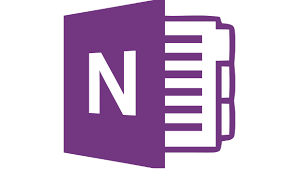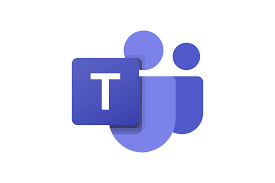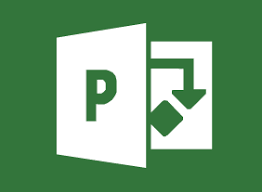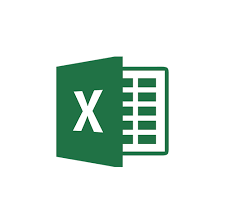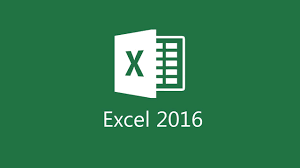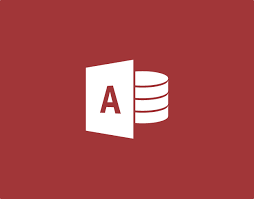AWS Certified Cloud Practitioner (Exam CLF-C02): ITPRO TV Videos, Labs and Practice Tests
Course Specifications
Course Number: ITP76-021_rev1.0
Course Length: 18 Hours 18 Minutes
Course Description
The AWS (Amazon Web Services) Cloud Practitioner certification serves as the ideal starting point for technical and non-technical professionals to build expertise in the AWS cloud. This course provides a foundational introduction to AWS's most popular cloud services, including EC2, Lambda, S3, EBS, VPC, and RDS. You'll learn the core concepts of cloud computing and see how billing and pricing strategies can save companies money on their IT infrastructure. The course also explores cloud security and compliance solutions, covering every objective and service listed on the Cloud Practitioner exam objectives Course Learning Objectives: 1) Explain foundational cloud concepts. 2) Use popular AWS services, including EC2, Lambda, S3, EBS, and VPC. 3) Apply fundamental security best practices in AWS. 4) Use pricing models and information resources to manage cloud costs.
Course Content
Course Overview (2 Episodes: 0 Hours 24 Minutes)
Course Overview (5 minutes)
The AWS (Amazon Web Services) Cloud Practitioner certification serves as the ideal starting point for technical and non-technical professionals to build expertise in the AWS cloud. This course provides a foundational introduction to AWS's most popular cloud services, including EC2, Lambda, S3, EBS, VPC, and RDS. You'll learn the core concepts of cloud computing and see how billing and pricing strategies can save companies money on their IT infrastructure. The course also explores cloud security and compliance solutions, covering every objective and service listed on the Cloud Practitioner exam objectives. Course Learning Objectives: 1) Explain foundational cloud concepts. 2) Use popular AWS services, including EC2, Lambda, S3, EBS, and VPC. 3) Apply fundamental security best practices in AWS. 4) Use pricing models and information resources to manage cloud costs.
Study Tips and Techniques (18 minutes)
Let's review some tips and tricks for your exam prep. Course Learning Objectives: 1) Explain foundational cloud concepts. 2) Use popular AWS services, including EC2, Lambda, S3, EBS, and VPC. 3) Apply fundamental security best practices in AWS. 4) Use pricing models and information resources to manage cloud costs.
Intro to Cloud (12 Episodes: 4 Hours 17 Minutes)
Course Introduction (12 minutes)
This episode introduces you to the AWS Cloud Practitioner exam and provides an overview of the scope and purpose of the exam. You'll learn about the exam's intended audience and typical question types you can expect when taking the exam. You'll also learn some tips on how to use study resources and how to access AWS to help you become a certified AWS Cloud Practioner.
What is the Cloud? (21 minutes)
This episode discusses the characteristics that qualify a technology as cloud. NIST (National Institute of Standards and Technology) has defined five characteristics that must be present in any cloud platform, which helps you distinguish between types of clouds compared to other technologies. You'll also learn about ways cloud computing is a disruptive force in IT throughout many industries.
Well-Architected Framework Pt. 1 (17 minutes)
The Well-Architected Framework is made up of six pillars. In this episode, you'll get an introduction to all six pillars and a more in-depth discussion of the design principles and best practices of the first three pillars: Operational Excellence, Security, and Reliability.
Well-Architected Framework Pt. 2 (29 minutes)
The Well-Architected Framework is made up of six pillars. In this episode, you'll get an in-depth discussion of the design priniciples and best practices of the last three pillars: Performance Efficiency, Cost Optimization, and Sustainability.
Cloud Economics (21 minutes)
This episode compares on-premises expenses with cloud expenses. The cloud's total cost of ownership (TCO) is calculated very differently than on-prem costs with a greater emphasis on operational expenses rather than capital expenses.
Cloud Native Design (23 minutes)
This episode compares cloud-native services with services that are designed to replicate on-prem infrastructure. Many new cloud services have emerged specifically to provide optimized performance and security in the cloud. Learning how these services work helps users make the mindset shift required to design cloud natively.
Migration Strategies (21 minutes)
Cloud adoption can be approached both as an organization and by the workload. Each approach offers various options to achieve the desired outcome. In this episode, we'll compare adoption strategies and migration tasks, as well as services that can help in the migration process.
Accessing Your AWS Resources (22 minutes)
This episode demonstrates options for managing cloud resources, including the AWS console and the AWS CLI (command line interface). Other programmatic access types include API (application programming interface) and SDK (software development kit) options, as well as IaC (infrastructure as code). Each access type serves various use cases, depending on who (or what) is accessing the resource and for what purpose.
Cloud Deployment Models (15 minutes)
This episode compares different types of cloud deployments, including public, private, hybrid, and multi-cloud. Each deployment model can address different types of needs while presenting varying concerns as well.
Connecting to the Cloud (15 minutes)
This episode identifies common methods used to connect a local computer, network, or data center to a cloud deployment. Some of these options rely on the public Internet, while others can provide private connections to AWS resources. The decision on which connection type to use is usually determined by budget, performance, and security needs.
AWS Infrastructure (28 minutes)
This episode gives an overview of the AWS infrastructure hierarchy, from regions to availability zones (AZs) and edge locations. The selection of a particular region or AZ is typically determined by latency or cost requirements. Edge locations offer additional options.
Edge Computing (21 minutes)
AWS edge locations bring compute and storage closer to users. In this episode, you'll learn about several options for reaching users at the edge, including Local Zones, Outposts, and Wavelength Zones.
Compute (8 Episodes: 3 Hours 11 Minutes)
Popular Compute Services (16 minutes)
This episode surveys popular compute services in AWS and discusses common use cases for EC2 (Elastic Compute Cloud), ECS (Elastic Container Service), and Lambda. You'll also learn about the role of load balancers and auto scaling in supporting a cloud's elasticity.
VMs in the Cloud (29 minutes)
This episode demonstrates how to use EC2 to deploy a VM (virtual machine) instance. You'll learn about many of the configuration options you can use to adapt EC2 to different purposes, and pricing options for matching costs to use patterns.
Containers in the Cloud (22 minutes)
If you're curious about what containers are and how they work, this is the episode to watch! You'll learn about the components of ECS (Elastic Container Service) and EKS (Elastic Kubernetes Service), how clusters work, and where container images are stored.
Serverless Compute (19 minutes)
Serverless services let developers and architects focus on innovation, not server management. This episode demonstrates how to use Lambda to practice deploying serverless functions. Lambda offers many practice blueprints you can use without needing to know how to code. After deploying a function, you can then assign a trigger and a destination.
Scaling Compute (29 minutes)
One of the primary benefits of the cloud is the ability to scale almost infinitely, innovate with agility, and automatically adapt to shifting demands. In this episode, you'll learn how scalability is implemented in many AWS services, how to right-size these resources, and how to load balance incoming traffic.
Popular Database Services (29 minutes)
This episode surveys popular database services in AWS and discusses common use cases for RDS (Relational Database Service), DynamoDB, and Redshift. You'll also learn about some differences between relational and non-relational databases.
Relational Databases (25 minutes)
This episode demonstrates how to use RDS to deploy a database instance. You'll see available options that affect an instance's functionality, and you'll explore ways to monitor an RDS instance's performance. Finally, you'll learn about how to incorporate Aurora for serverless optimization.
Other Database Types (18 minutes)
AWS offers many database services beyond relational databases. This episode covers IMDBs (in-memory databases) and several types of NoSQL databases.
Networking (4 Episodes: 1 Hours 18 Minutes)
Popular Networking Services (20 minutes)
This episode surveys popular networking services in AWS and discusses common use cases for VPC (Virtual Private Cloud), Route 53, and security groups. You'll also see how VPCs and subnets are used to allocate IP address spaces in AWS.
Networking in VPCs (20 minutes)
This episode demonstrates how to use VPC to practice defining network spaces in AWS. VPC is used to define network boundaries, IP address ranges, and subnets. VPCs can limit or allow communication into these network spaces. You'll also see how to define public and private network spaces.
VPC Security (23 minutes)
Once you create a network space in the cloud, you're responsible for securing it. In this episode, you'll learn options for protecting your VPC-hosted resources. Some of these services protect at the network interface level, while others protect on a larger scale for subnets or VPCs.
Edge Services (13 minutes)
Some edge services bring compute and storage resources closer to your users, while other edge services bring your user traffic off the open Internet and back to your resources as soon as possible. In this episode, we'll explore both options and see when to use each.
Storage (4 Episodes: 1 Hours 23 Minutes)
Popular Storage Services (25 minutes)
This episode begins with a comparison of different types of storage. We'll then survey popular storage services in AWS and discuss options for building hybrid cloud storage. You'll also see how storage migration services can streamline the migration process.
Object Storage (17 minutes)
Object storage is a storage structure built for the cloud. This episode demonstrates how to use S3 (Simple Storage Service) to practice deploying storage buckets. S3 offers many pricing options for various storage tiers, which can help to increase performance or decrease costs. You'll also see how to control public access from the Internet to an S3 bucket and its objects.
Block Store and File Systems (15 minutes)
This episode demonstrates how to deploy block storage in AWS. EBS (Elastic Block Store) can be used to manage storage volumes attached to VM instances. You can either install a file system on these storage volumes, or you can use a file system service in AWS, such as EFS (Elastic File System).
Backups and Lifecycles (25 minutes)
Over time, data evolves through several lifecycle phases, from creation to archiving or even deletion. In AWS, you can automate many of these lifecycle transitions. In this episode, you'll learn about options for data lifecycle management in S3 as well as options for backing up data stored in several AWS storage services.
Specialized Services (7 Episodes: 2 Hours 33 Minutes)
AI & ML Services (17 minutes)
Cloud platforms offer many options for companies to incorporate advanced, cutting-edge technologies. In this episode, you'll learn about some of the options for AI (artificial intelligence) and ML (machine learning) services in AWS. We'll discuss common business use cases, and group services in a way to make them easier to understand and remember.
Analytics Services (22 minutes)
As data becomes more insightful and influential, data analytics services become increasingly critical to a well-run system. In this episode, you'll learn about many of the data analytics services offered in AWS and how to choose between them for various tasks.
Application Integration Services (25 minutes)
When building event-driven systems, there must be some way to manage and direct messages between microservices. This episode explains the role of EventBridge in supporting these systems. We'll also compare SNS (Simple Notification Service) and SQS (Simple Queue Service).
Business and Engagement Services (24 minutes)
Business and engagement services support businesses with customer engagement services, delivery of business applications, and end-user computing services. This episode explores several of these options in AWS to help you choose between them for various scenarios.
Developer Tools (17 minutes)
Developers require certain types of services in order to manage the software development process. In this episode, you'll learn the basic process of a code pipeline and what services can be used at certain phases of development. You'll also learn about X-Ray's role in troubleshooting application problems.
Frontend, Mobile, and IoT Services (16 minutes)
Web and mobile services rely on backend processes that can be primarily automated with the implementation of certain services. In this episode, you'll learn about options for backend support for frontend web and mobile services. You'll also learn about two services used specifically to support IoT (Internet of Things) systems.
Automation and IaC (28 minutes)
The more you can automate in the cloud, the more you can dedicate your time and energy into innovating to adapt to new ideas, technologies, and markets. In this episode, you'll learn about ways to automate infrastructure deployment and management using code.
Security (8 Episodes: 3 Hours 36 Minutes)
Shared Responsibility Model (22 minutes)
This episode explains the division of labor in securing cloud resources. The cloud provider and the cloud customer contribute to cloud security in different ways. The shared responsibility model identifies each party's portion of security implementation, especially as that dividing line shifts for different types of services.
Cloud Compliance Concerns (29 minutes)
This episode explores how compliance requirements affect security configurations needed to protect data stored in AWS. Compliance requirements are enforced by various governments and industry organizations. Many AWS services are designed to provide support in helping customers more easily achieve compliance in their industries and geographies, including requirements for monitoring, reporting, and auditing.
Security Services (30 minutes)
AWS takes security seriously and offers a plethora of services designed to support more secure deployments. In this episode, you'll learn about some of the options for implementing layered security, searching for vulnerabilities, and automating responses to security issues.
Data Security (28 minutes)
This episode compares the common states of data: in use, in transit, or at rest. Encryption is the primary tool for directly protecting data in all three states. Several AWS services can be used to apply and manage encryption, some of which are managed by AWS and some are configured by the customer.
Monitoring and Logging Services (28 minutes)
This episode demonstrates some options for monitoring and logging cloud traffic, events, costs, and performance. You will learn the differences between monitoring and logging, and what each process is intended to accomplish. You'll also learn about several services used to increase visibility into your cloud deployment.
AWS IAM (Identity and Access Management) (31 minutes)
This episode explores the Identity and Access Management (IAM) service. In IAM, roles and policies are used to control who can do what to which resources. You'll learn about establishing cross-account access. We'll also emphasize the sensitive nature of the root user and how to protect this powerful user account.
Cloud Access Control (29 minutes)
This episode describes options for managing user access across an Organization. We'll also discuss how to establish programmatic access (such as through the CLI or an SDK) with access keys, and how to protect and manage credentials, API keys, and other secrets needed for access control.
Security Documentation (16 minutes)
This episode explores documentation to assist customers in better securing their cloud resources, including documentation and best practices. Many community resources are also available for connecting with other users and experts.
Billing & Support (4 Episodes: 1 Hour 34 Minutes)
Organizations (27 minutes)
Organizations give companies options for managing multiple accounts across business units, workloads, and projects. In this episode, you'll learn about the benefits provided by Organizations, why you might want to use multiple accounts, and some options you have for monitoring security and permissions across these accounts.
Cost Monitoring (30 minutes)
Cost optimization is a very high-priority concern for companies using cloud services. In this episode, we'll explore options for monitoring and optimizing costs, and you'll find out how to anticipate pricing for services you're interested in using. Additionally, tags in most resource types can be used to allocate costs by department, project, or other factor.
AWS Information Resources (17 minutes)
One of the biggest challenges to taking fullest advantage of the cloud is increasing employee expertise within your company. In this episode, we'll explore a wide variety of resources available for informing your work in AWS and connecting with experts to fill gaps in your team's skill set.
AWS Support Services (19 minutes)
This episode explores options for obtaining support from AWS and other experts. We'll compare support subscription tiers as well as communities available for connecting with other users and experts.
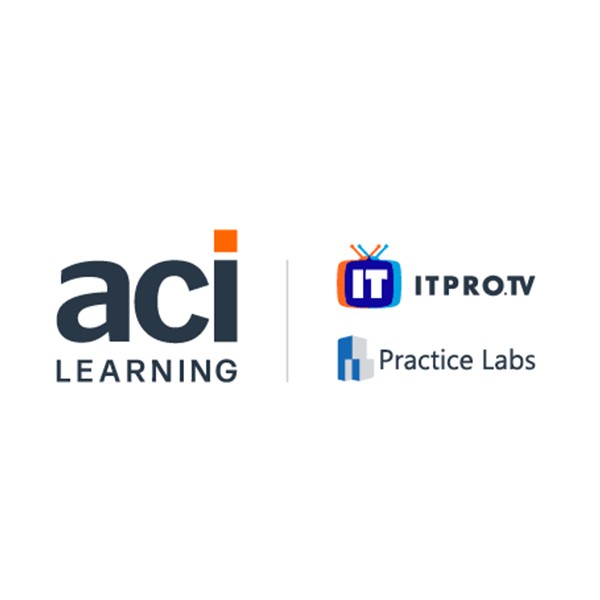

.jpg)
.jpg)
.jpg)
.jpg)
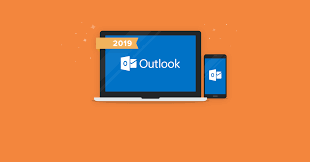

.png)
